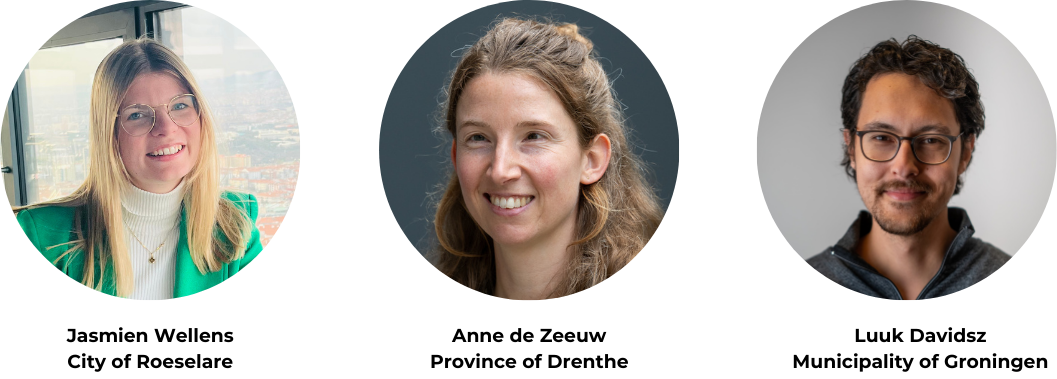Digital tools can be a great way to improve engagement between government and citizens. In this article, we speak with Luuk Davidsz (Groningen Municipality), Anne de Zeeuw (Province of Drenthe) and Jasmien Wellens (Roeselare Municipality) to learn more about how digital platforms help their organisation involve citizens in decision making and the broader debate about shaping their surroundings.
Introducing the platforms: Hopler, Polis and Open Stad
The municipality of Groningen uses the platform ‘Stem van Groningen’ (the voice of Groningen), which is built on an open source platform called Open Stad. It is a website where citizens participate in governmental decision-making processes. They can contribute by submitting ideas, voting on proposals, and sharing their opinions on various aspects of projects. The scale of the project ranges from small neighborhood initiatives to city-wide inquiries and projects. It is a relatively easy and affordable way to reach a large audience, in conjunction with physical events . The management of the tool can however be technically complex.
The Province of Drenthe uses the Polis tool on their newly published website wijzijndrenthe.nl (We are Drenthe), which facilitates an open conversation between citizens about a provincial topic. The tool allows people to react to one another in an orderly manner, and uses AI tools to summarise and categorize the discussions. The platform is used as a means to collect input on a question from the provincial Parliament, and sets the agenda for future talks between politicians and citizens.
The City of Roeselare uses Hoplr, a widespread neighbourhood platform used in the Netherlands and Belgium. Somewhat different to the two platforms mentioned above, it functions like a community platform for a specific neighbourhood and fosters community engagement and cohesion. The platform is managed by the municipality, which can adjust its functionality to their own preferences. Hoplr is useful for polling, functions as a marketplace, an activity calender and digitally connects neighbours.
How digital participation makes a difference
Digital platforms are truly an addition to ‘regular’ forms of citizen engagement, and do in no means replace other efforts governments need to do to engage citizens. However, they can be a great way to engage a large audience, with a lower threshold than regular forms of participation have. Both Luuk, Anne, and Jasmien confirm that they believe that digital platforms reach people that would not be reached by physical only forms of citizen engagement methods. Answering a question on your phone is a different time commitment than attending physical meetings in your community center or townhall. In a digital environment, every vote is equal, and allows for the maybe not so loud voices to contribute to the discussion too. On the other hand it is important to keep in mind that digital tools can lack depth, context and nuance. Although platforms like Polis do allow citizens to add their own ideas to the conversation, it is different than having a face to face conversation. Digital participation can be a stepping stone or the start of a more in-depth conversation, whereby digital and physical participation can compliment each other.
How to implement digital participation for your organisation
Digital platforms can be a real step forward for any government trying to reach their citizens, however, it is important to keep in mind that the type of platform is the right match for an organisation and its goals. Luuk, Anne and Jasmien stress the importance of expectation management in any participation process. How are the answers processed? What will be done with the eventual results? Transparent communication and an open source tool can ensure a fair process for all those involved.
Look at what your organisation wants, and design a process around that. So define the needs, and choose a platform that can facilitate that. Keep in mind that any digital tool requires time and investment to keep it running, and some tools can be technically complex. Like many other forms of participation, the more time and attention you give it, the more impact it can have.
On a final note, Anne refers to Audrey Tang, the first digital minister of Taiwan. Tang sets the stage for what technology and digital media can do for democracy in a positive manner. Online participation, in their view, should be used to make processes for citizens’ input “fast, fair and fun”.

